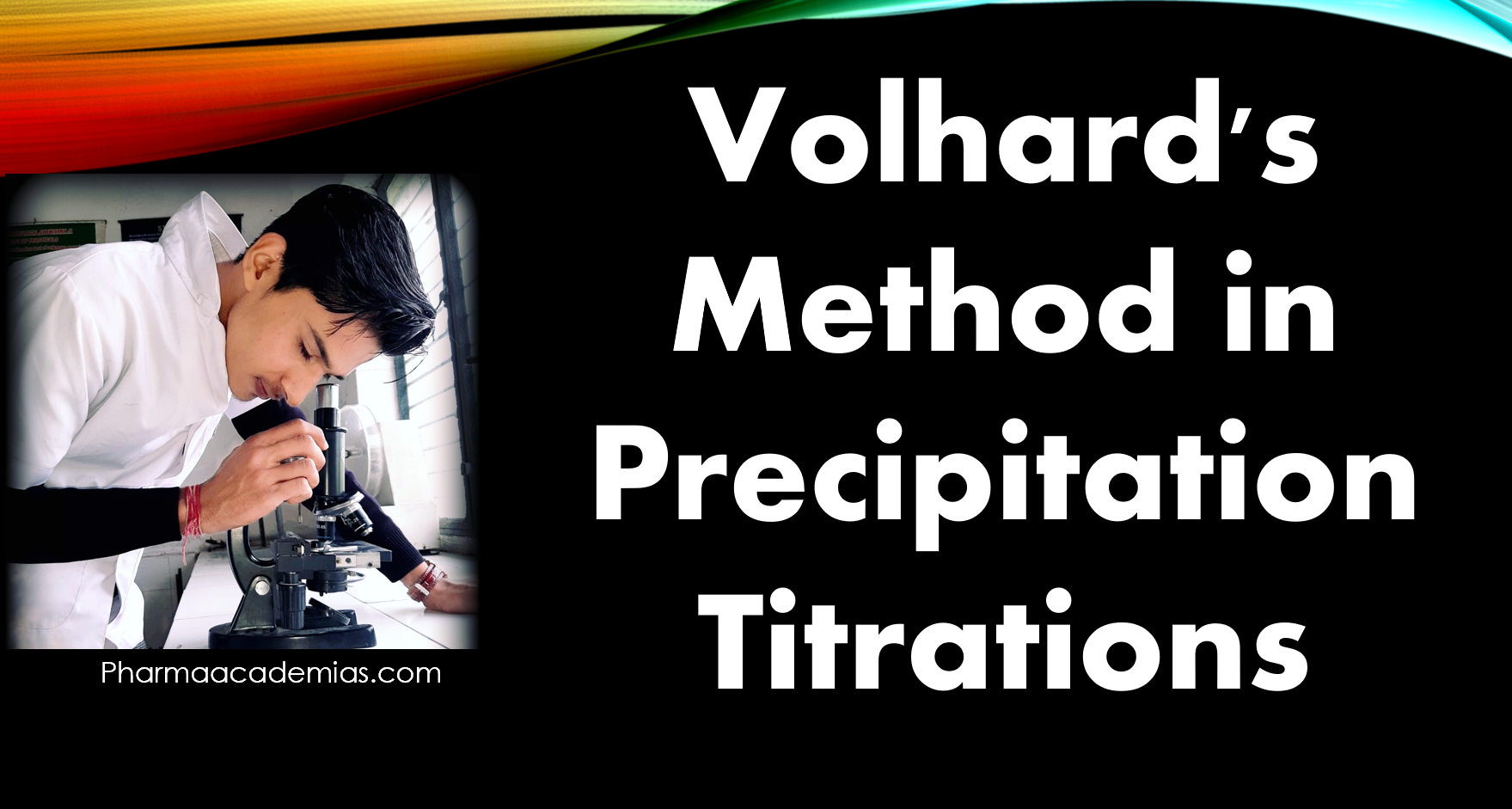Volhard’s method, also referred to as the silver nitrate titration method, represents a classical precipitation titration technique for determining the concentration of halide ions in a solution. It resembles Mohr’s method but finds primary application in determining halides other than chloride ions, including bromide (Br⁻) and iodide (I⁻) ions.The key difference lies in choosing an appropriate indicator and the calculation method.
Key Components and Steps of Volhard’s Method:
1. Preparation of the Sample:
Prepare the sample containing the halide ions. Remove or neutralize any impurities or interfering substances.
2. Titrant Solution:
Use a standardized silver nitrate (AgNO3) solution as the titrant. This solution contains Ag⁺ ions.
3. Indicator:
Use an appropriate indicator to identify the titration’s endpoint. In Volhard’s method, employ an iron(III) indicator solution. This iron(III) indicator typically comprises potassium ferricyanide (K3Fe(CN)6) and serves to detect excess silver ions.
4. Titration Procedure:
- Take a small volume of the sample solution in a flask or beaker.
- Add a few drops of the iron (III) indicator solution to the sample.
Initiate the titration by adding the standardized silver nitrate solution (AgNO3) to the sample solution.
A white precipitate of the respective silver halide (AgX, where X = Br or I) forms as the silver ions react with halide ions present in the sample. The reaction is represented as Ag⁺ + X⁻ → AgX↓.
As the titration progresses, the silver ions continue to react with halide ions until all the halide ions precipitate as AgX.
– The endpoint is reached when the appearance of the first persistent reddish-brown color (due to the formation of silver ferricyanide, Ag3[Fe(CN)6]2) signifies that all the halide ions have reacted with the silver ions.
– Record the volume of the titrant solution required to achieve the endpoint. This volume calculates the concentration of halide ions in the sample.
Calculations:
The calculation of halide ion concentration is based on the reaction’s stoichiometry and the formation of silver ferricyanide at the endpoint. The amount of AgNO3 added (in moles) equals the amount of halide ions in the sample. From this, the concentration of halide ions can be determined.
Advantages and Considerations:
– Volhard’s method is versatile and applicable to several halide-containing samples.
– It’s important to use high-purity reagents and carefully handle the iron(III) indicator to prevent contamination.
– Control of pH and temperature during the titration is essential for accurate results.

